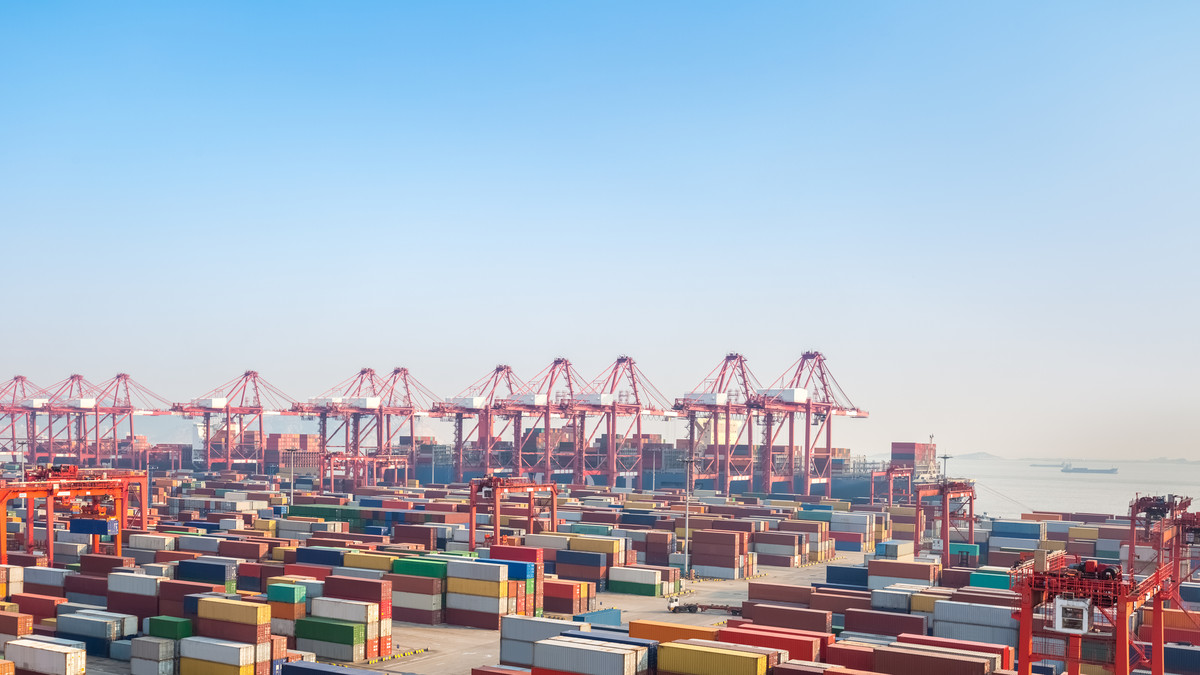Technology like blockchain and big data is enabling connected networks in the supply chain, driving operational efficiency and strategic advantages. Learn what Forbes says are just a few key ways for leading businesses to transform their supply chain.
Today, there is an extraordinary amount of change affecting the global supply-chain network. From increasing customer expectations and new technologies, to emerging competitors and growing uncertainty in the world, the entire supply chain system is transforming at an unprecedented pace. Customers have high expectations and are empowered with abundant choices. They expect quick and accurate buying and fulfillment anytime, anywhere. Companies must be equipped to meet customers’ expectations and cope with a shifting paradigm. Despite the demand, many businesses are not ready to keep up with these dynamics in the short or long term. Therefore, organizations should be searching proactively for ways to prepare their supply chains to more strategically contribute to their growth. Here are some of the most effective and innovative ways business leaders are taking action to get more value from their supply chains in the years to come.
Creating a digital twin
Considering supply-chain operations as linear processes along the value chain leads to discrete and disconnected processes conducted in information silos. Hence, leaders are integrating their suppliers and customers into a demand-driven supply chain where they can leverage an interconnected, technology-enabled network as the key to their competitive advantage. In other words, organizations are trying to transform their traditional supply chains to a digital supply network (DSN). Technology has enabled many organizations to create a so-called digital twin of the physical supply chain, which allows operational managers to understand and analyze entire situations, systems, and processes digitally so they can make decisions even before incidents are allowed to disrupt the operation. In this context, location intelligence plays a critical role in supply chain strategies and operations. Geospatial technologies are used widely to monitor and analyze network assets, suppliers, distribution sites, buyer behaviors, and social and environmental patterns. This offers greater end-to-end visibility and transparency along the supply chain, real-time response to meet new service levels, and operational efficiency. Moreover, the supply chain can become more resilient to external disruptions by responding proactively to market disorders, which in turn minimizes excess costs and contributes to better customer service and corporate growth.

Digital twin of customer transit analysis
Evolving to meet growing demand
In addition to investing in adopting a DSN, the largest supply-chain and logistics players are also investing heavily in new waves of fulfillment, automation, delivery technologies, and Internet of Things (IoT) devices. This includes having sensors that provide visibility of items in transit, cloud platforms for fleet-management optimization, robotic fulfillment vehicles, driverless vehicles, and drone deliveries. Real-time asset tracking, monitoring, and alerting keep businesses running with minimal disruptions. This kind of data, which regularly affects assets, includes weather conditions, driving patterns, traffic situations, and speed of transit. When analyzed geospatially, this real-time data can help third-party logistics companies, for example, choose more efficient routes, pay lower fuel costs, manage drivers’ time, and organize head counts. Ultimately, this will optimize fleet availability, efficiency, and reliability while meeting more demanding service-level agreements. New technologies allow aspirational supply-chain goals to become practical: to provide today’s consumer with better, faster, and cheaper fulfillment options.
Using big data to make big predictions
As rich, informative data flows into organizations, they need to access the right data as quickly as possible to visualize, aggregate, analyze, and apply the insights generated to make better-informed decisions at all levels of the supply-chain planning and operations. Successful companies employ artificial intelligence (AI) and machine learning to predict future activities and simulate new networks, enabling proactive decision-making on both strategy and performance. Many modern firms are adjusting their business practices in predictive environments to adapt to changing demands and predict which products their customers will want, and where, as well as who are their best customers and what services would generate the most revenue. Manufacturers use predictive algorithms to forecast demand, conduct predictive maintenance, and optimize their after-sale services with predictive analytics to grow profit margins. Location is becoming more vital in big-data analytics as IoT and smart technologies produce data from tracking devices, drone images, and more. With deep-learning algorithms, meaningful data can be derived and analyzed to create optimized insights; observations; and, ultimately, accurate predictions about customer behavior.
Blockchain
Blockchain technology is gaining momentum, as it promises an unprecedented level of transparency, trust, and visibility within supply-chain transactions. As an immutable alternative, blockchain can solve the complicated recordkeeping of products that in turn would reduce the overall cost of moving items within the supply chain, while improving quality and safety of products. With the application of blockchain, data will be more interoperable, which makes it easier for manufacturers, suppliers, distributors, and vendors to share information and prevent delays along the chain and improve the tracing of products from the manufacturer level all the way to the shelves. For example, one major big-box retailer is applying blockchain to its lettuce products end-to-end supply chain. In the case of a potential supply chain contamination like an E. coli outbreak, the retailer would not even need to recall all the lettuce on the shelves anymore. Instead, the only products that would need to be pulled would be those that came from the contaminated source according to the shared blockchain ledger. Food wholesalers, pharmaceutical companies, and consumer goods companies are looking into actively applying blockchain technology for this reason — it allows them to precisely target issues on the supply chain to avoid costly liabilities within the customer base, risk to brand equity, and high waste of products and resources.
Global supply chains are becoming more complex and interconnected every day. Supply chains that adopt transparency, comprehensive analytics, and cognitive technologies will have a distinct competitive advantage. The first step is establishing a digital supply network that integrates all supply chain entities into a single view to visualize and continually monitor performance and risk. With a digital twin fully mapped out, the next step is to incorporate innovative approaches wherever they can improve the supply chain. Adopting emerging technologies, such as blockchain and big-data analytics, to aggregate insights and create prescriptive, predictive models is what organizations should invest in to stay relevant in this fast-growing global environment.
This article was written by Yasaman Kazemi from Forbes and was legally licensed through the NewsCred publisher network. Please direct all licensing questions to legal@newscred.com.
![]()



